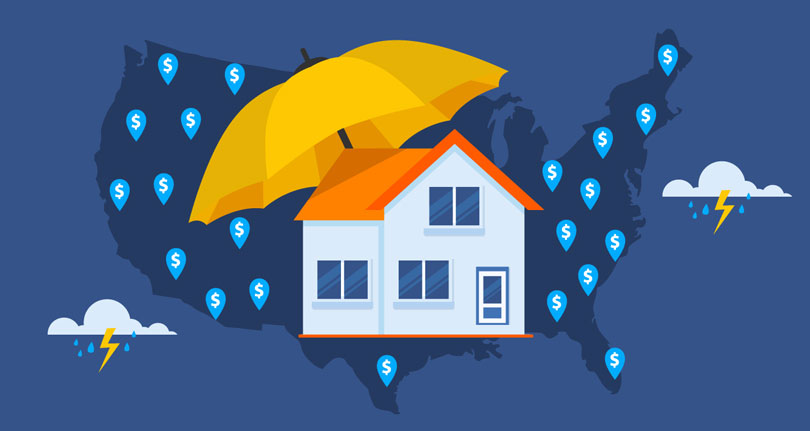Brink of Homelessness

Becoming homeless is one of the toughest challenges some people will ever face, and across the US, this is becoming an increasingly likely scenario for many.
Using a range of key data points from government and financial institutions in each state, we analyzed how many days away from homelessness the average American is.
Research undertaken by the National Institute on Retirement Security found that 66% of Millennials (those born between 1981-1996) haven’t saved any money for retirement, which goes up to 83% for Latino Millennials. Other studies have highlighted that many are taking money from their own retirement accounts due to the pandemic, taking advantage of the Coronavirus Relief Bill, which waived penalties.
Millennials who rent with no savings are an average of 114 days away from homelessness
When this picture is coupled with a wealth of studies that state anywhere from 23% to 45% of Americans have $0 in savings, you can imagine the safety net for many is severely reduced, or in some cases, nonexistent, especially for those who do not own a home, despite there being an average of 59 empty properties per homeless person in the US.
Other studies show that almost a quarter (24%) have less than $1,000, and the Federal Reserve states it may be worse than this, with 40% having less than $400. These figures further reveal the tiny safety bubble people have between their current lifestyles and drastic financial decline.
Key statistics
- A Millennial renter with no savings or retirement fund is on average, over 3 months (114 days) away from becoming homeless.
- Millennial homeowners with no savings or retirement funds, would have a period of 227 days (over 7 months) before becoming homeless.
- The 64.8 million working Americans with less than $400 in savings and no retirement fund, would be an average of 118 days away from homelessness if renting.
- If these Americans with less than $400 were home-owners they would be 231 days away from homelessness.
- In Wyoming, renters with no savings or cash, are on average, just 2 months away from being homeless.
- The average financially-secure home-owning Baby Boomer, with retirement and cash funds to use, would be over 55 months (4.5 years) away from homelessness if they were to lose their job today.
- COVID-19 has caused 49.23m Americans to lose their jobs. Around 50% of those with retirement funds have had to withdraw some money from it: averaging $6,757. This will have pushed the average jobless person 73 days closer to homelessness.
- Using our calculations, the $600 check decreases the ‘days to homelessness’ for the average renter by 6 days, if this was weekly, it may provide that necessary buffer between someone living on the streets or under a roof.
- In the worst state, Wyoming however, this extra buffer granted by a $600 weekly payment would only be an extra 3 days.
The map below uses four types of people that allow you to see how close the average person of that category (or generation) would be to homelessness in each state. For example, the Millennial button below allows you to see how close the average Millennial in each state would be to homelessness should they lose their job today. The final button allows you to see the same data but for someone (of any age) who has no savings or retirement funds behind them. Find out more about the Brink of Homelessness below.
US Map: How close are Americans to homelessness?
Methodology
This study analyzed the financial and personal situation of the average American in each state, and what safety nets would be in place should someone fall close to becoming homeless.
The analysis accounts for retirement funds, withdrawal penalties, taxes, cash savings, value of belongings and their sale-value (based on a 1-bed apartment from insurance figures), state-specific benefits, the average cost of living, grace periods from both landlords and lenders (for renters and mortgage holders), and average debt in the form of auto and credit card repayments. These factors are based on the average American in each state, therefore, each state’s cash figures vary. Generational comparisons are based on financial data primarily from Statista and the Transamerica Center for Retirement Studies data alongside all other aforementioned state-specific financial analyses.
Sources
Data was taken from the Federal Reserve Banks, U.S. Bureau of Labor Statistics, Personal Capital’s savings funds, U.S. Bureau of Economic Analysis, Missouri Economic Research and Information Center, The Council For Community And Economic Research, New York Fed Consumer Credit Panel / Equifax, AutoWise Car Repayment Analysis, Experian, GoBankingRate rent analysis, home contents price data shared from Simply Insurance.
Retirement and savings cash data was taken from National Institute on Retirement Security, Federal Reserve, BankRate, MarketWatch, Statista, GoBankingRates, Pew Social Trends, Transamerica Center for Retirement Studies, MotleyFool and Forbes studies.





